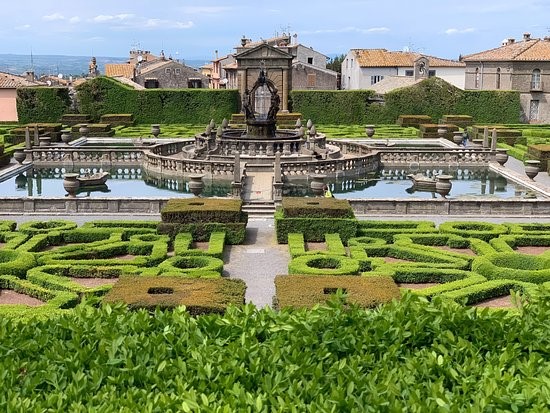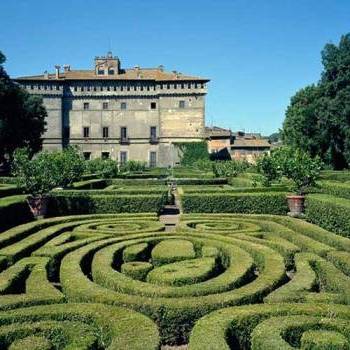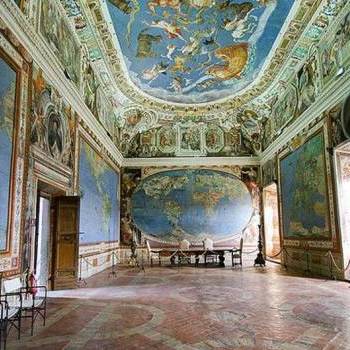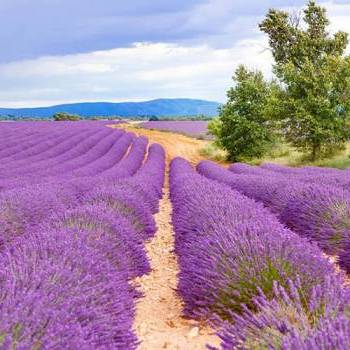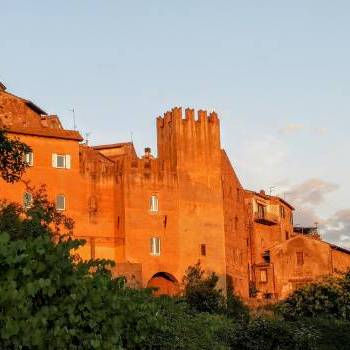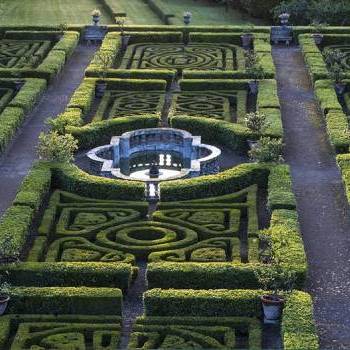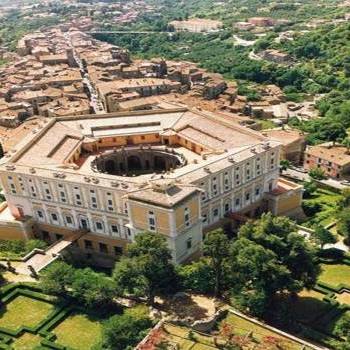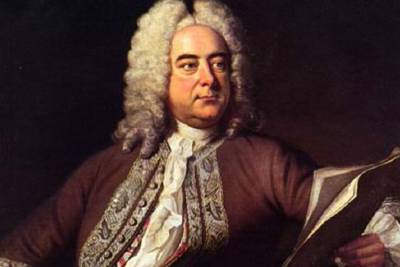
A journey among Tuscia’s secret corners
A journey among Tuscia’s secret corners
5 days / 4 nights - Travel idea
Suggested time: June - July
The Tuscia region, around Viterbo is a beautiful and fascinating territory situated north of Rome. It’s an unknown area to mass tourism, focused on the near Capital, enriched by a fair beauty made of sweet landscapes, surprising pre-Roman and Etruscan archeological evidences, historic and fortified villages, Renaissance villas and ''secret gardens'', peaceful places to stop and listen to Vivaldi’s “The Four Seasons”.
The travel begins with a guided tour of a magnificent villa that includes one of Italy's most famous gardens: Villa Lante. You can spend the afternoon admiring this magical outdoor space, surrounded by hedge mazes and you can enjoy water games. Then you can visit the historic center and beautiful religious buildings of a village not far from Viterbo: Tuscania. The journey will continue near this jewel, where you can have a tasting lunch and then you can relax in the gardens and among the lavender fields.
You'll walk and admire the particularly luxuriant nature of Vetralla and its historical center, also you can enjoy a beautiful private concert in a theater located in a historic garden: Teatro del Giardino Segreto of Palazzo Piatti.
Visiting Castello Ruspoli di Vignanello, medieval castle home to one of the most important and best preserved Renaissance Gardens in Europe. The journey ends with a visit to Viterbo among its Etruscan and Roman remains, suggestive medieval quarters and aristocratic palaces.
Block notes:
- The Italian Gardens - A succession of wonderful gardens and water features
- Palaces - The incredible interiors of Palazzo Farnese in Caprarola
- Music - Vivaldi’s “The Four Seasons” performed in a relaxing atmosphere
- Nature - The lavender fields in Tuscania
Proposal for an indicative itinerary. The tour can be modified and adapted to any requests for further insights on topics chosen by the custom.
Day 1 - Arrival in Viterbo - Bagnaia
Arrival in Viterbo by own means. Accomodation at 4* Hotel.
Free lunch.
In the afternoon departure by own coach and guided visit of Villa Lante (13km) in Bagnaia.
Villa Lante is one of the major achievements of the Italian sixteenth century. Closed in a rigorous geometric maze designed by the architect Jacopo Barozzi da Vignola, Villa Lante was built in the second half of the sixteenth century upon the will of Cardinal Gambara, close to a wood, formerly a hunting reserve. The garden is the main and characterizing element of the architectural work. The geometries of the evergreen hedges, the peperino statues, the water games and paths that flow into the pools, all contribute to narrate a nature ordered and combined according to the man’s pleasure.
Return to the hotel by bus. Dinner at the hotel.
Villa Lante's Garden
The Villa is crossed longitudinally by a stream that flows high up from the rock and follows the slope of the land, taking advantage of the unevenness and connecting them with terraces and fountains until it stops at Fontana dei Mori by Giambologna: a water square divided by elegant balustrades into four basins on which a boat floats with a gushing putto. In the center a triple circle of basins culminates in the group of four Moors holding the coat of arms of Pope Sisto V. From the entrance you can enjoy the view of the entire garden. The two symmetrical square-plan buildings don’t interrupt the flow of water, a natural element and the true protagonist of the Villa, which descends impetuously even if channeled between the jaws of a shrimp in peperino, symbol of Cardinal Gambara or collected in the Fontana dei Giganti depiction the Arno and the Tevere.
Day 2 - Tuscania (23km)
Morning: Breakfast in the hotel.
Departure by own coach to Tuscania, one of the most picturesque towns of the Tuscia area, characterized by the ancient traces of the Etruscan civilization and medieval architecture. We will visit the historic center full of the the reddish-brown buildings made of tuff rock.
Continuing our tour we are going to admire, among suggestive glimpses, ancient churches, baroque fountains and beautiful squares such as Piazza del Comune where the lids of Etruscan sarcophagi magically appear. There are numerous religious buildings, including the famous Chiesa di San Pietro (visit inside) a majestic church in Romanesque style which still houses many mosaics and ornaments and the Chiesa di Santa Maria Maggiore (visit).
We continue by bus (3km) to visit the Tomba della Regina Etruscan necropolis in the small Renaissance church that bears the same name. The necropolis is spread over three terraces along the slope, on the first level there is the famous Grotta della Regina, immediately below a group of chamber tombs from the Archaic period, on the last level the Tombs of the Curunas Family and the Tomb of the Sarcophagus of the Amazons of the Hellenistic period. The necropolis was object of archaeological excavations conducted by the Campanari family of Tuscania in the early nineteenth century. It takes its name from the legend narrated by the archaeologist Secondiano Campanari of Tuscania according to which at the time of the discovery on a wall of the tomb the painted image of a girl was seen, perhaps a young queen, an image which dissolved shortly after.
Tasting lunch of typical products in a farmhouse.
Tuscania is also famous for its marvelous lavender fields and its timeless fairy-tale atmospheres. Around the center there are farms producing essential oils of lavender and helichrysum, collected directly in the beautiful fields located along the Marta’s valley. We will stop in a local Agriturismo for a walk through the gardens and lavender fields and we will take the opportunity to relax and have a snack with homemade biscuits and elderberry syrup.
Return to the hotel by bus, dinner in hotel and overnight.
Day 3 - Vetralla
Breakfast in hotel.
11.30 am Departure by own coach to Vetralla.
Vetralla is one of the most authentic Tuscia’s villages, surrounded by a particularly luxuriant nature. It has very ancient origins dating back to Etruscan times. Walking through the narrow streets of the historic center of Vetralla you will discover glimpses of the authentic flavor of the past, wonderful churches with Renaissance frescoes and a characteristic open-air theater located in a beautiful historic garden: the Teatro del Giardino Segreto of Palazzo Piatti.
Welcome drink in the garden.
Following a brief private concert in a charming corner of the Secret Garden.
Ensemble Opera Extravaganza
Solo violin - strings and harpsicord
Concerto Nº 1 in E major – “Spring” by Vivaldi
Allegro (in E major)
Largo e pianissimo semper (in C sharp minor)
Pastoral Allegro (in E major)
Concerto Nº 2 in G minor – “Summer” by Vivaldi
Allegro non molto (in G minor)
Adagio and piano – Presto and forte (in G minor)
Presto (in G minor)
1.30 pm: Light lunch served outdoors with samples of homemade pasta and relaxing time in the garden to enjoy fresh fruit. In the afternoon, a corner will be set up with local artisans: a cheese maker with a practical demonstration of cheese making, a ceramist, a honey producer.
TEATRO DEL GIARDINO SEGRETO
Ensemble Opera Extravaganza
Concerto Nº 3 in F major - “Autumn” by Vivaldi
Allegro (in F major)
Adagio molto (in D minor)
Allegro (in F major)
Concerto Nº 4 in F minor – “Winter” by Vivaldi
Allegro non molto (in F minor)
Largo (in E flat major)
Allegro (in F minor)
Return to the hotel. Dinner at the hotel and overnight.
Palazzo Piatti in Vetralla
At the end of the nineteenth century it was a dream residence of wealthy Piedmontese landowners. The Piatti family had over 5,000 hectares of vast expanses of wheat and olive groves between Vetralla, Tuscania and Viterbo and also the Bisentina Island on Lake Bolsena.
The Vetralla palace reminded to a castle shape with four levels of extraordinary gardens immortalized in the postcards of the time. Shortly before 1916 Olga Matteini, an opera singer, met the sculptor and musician Pietro Canonica, and she took drawing and painting lessons from the "maestro". In 1917 and 1918 she sang the title part of her opera "La Sposa di Corinto" staged at Teatro Argentina in Rome. In 1924 Olga was officially adopted by Canonica and his wife Olga Sormani, bounded to them by a friendship and by the similar interest in art and music. The following year she married the heir of the Piatti family, Flaminio. Their first home was Palazzo Piatti. Olga set up a school in some rooms on the main floor, where she taught drawing and music to the children. War and the lack of care and maintenance by the successive owners, caused a century of abandonment and degradation. Today music resonates again in the building and in the gardens thanks to the new owners and their association "Opera Extravaganza" which spreads classical music and opera.
Day 4 - Vignanello / Caprarola
Morning Breakfast in hotel.
Departure by own bus to visit Castello Ruspoli di Vignanello (30km).
The property grew up around a Benedictin Friars fortess, built in the year 853, when the territory was part of the Papal State. The first feudatory was Beatrice Farnese in 1531. Five years later, on her death, Pope Paolo III Farnese confirmed the descent to his daughter Ortensia, married to Sforza Marescotti. The building underwent a transformation according to the Ghibelline architectural schemes, based on Sangallo’s design. The castle, as we see it today, was commissioned in 1610 by Marcantonio Marescotti's wife, Ottavia Orsini, daughter of the creator of the evocative Bomarzo garden, who left indelible traces of her love for this place: her initials and those of her two sons Sforza and Galeazzo allowes the certain dating of the birth of the garden. In 1704 the castle took the name Ruspoli, with the obligation to hand down the name and today it is still the summer residence of the descendants of the same family.
Lunch at restaurant.
Vignanello's Garden
The Viterbo area has the highest concentration of historic gardens in the world. Here the Italian garden has reached its maximum expression and Vignanello represents perhaps the most elegant, the most sophisticated and the most celebrated example in the world. The adjoining garden houses one of the most acclaimed parterres of the seventeenth century; the large, flat and rectangular space is crossed in length and width by four garden paths, which define twelve aligned and squared boxwood parterres which enclose a large basin in the center, enclosed by four arches of balustrades. These "plant sculptures", originally made of sage and rosemary, give the place the sharpness of an abstract geometric design. Despite the changes in style, especially at the end of the eighteenth century with the fashion for French broderies, the garden has miraculously remained intact. (Sofia Varoli Piazza - Landscape architect)
Afternoon: Transfer by coach to visit Palazzo Farnese a Caprarola (20 km).
The palace was one of the many stately homes built by the Farnese in their domains as proof of the magnificence and popularity of the family. After the establishment of the Duchy of Castro, in the early sixteenth century, Cardinal Alessandro Farnese (who in 1534 became Pope with the name of Paolo III) commissioned to Antonio da Sangallo the Younger, assisted by Baldassarre Peruzzi, a palace with defensive purposes dominating the surrounding area. The works stopped on the death of Sangallo. In 1556 Cardinal Alessandro, nephew of Pope Paolo III, settled in Caprarola, wanted to resume it entrusting it to Jacopo Barozzi, known as il Vignola. He changed the project from a defensive bulwark to a Renaissance residence. In 1559 the construction of the pentagonal building began. It was one of the most particular works of this period, and became the Cardinal's summer residence. The casino and gardens were built after Vignola's death, but they are so in harmony with the building that it is thought that they were already part of the architect's project.
Also the interior of Palazzo Farnese is spectacular. The pictorial surface of Palazzo Farnese in Caprarola, among frescoes, grotesques and stuccos, was created between 1561 and 1575 by the greatest artists of the 1500s, Taddeo and Federico Zuccari, Bertoja, Antonio Tempesta, Raffaellino da Reggio, Giovanni De Vecchi.
Return to the hotel by bus, dinner at the hotel and overnight.
Day 5 - Viterbo and Departure
Morning: Breakfast and check-out.
Departure by own bus and visit of the city center of Viterbo, “City of the Popes”. Capital of ancient Etruscan origins and of great historical traditions, it preserves one of the most important monumental layout of the region: aristocratic palaces, monuments with artworks of great interest, suggestive medieval quarters, churches and cloisters from various eras, slender towers and elegant fountains in peperino, the typical stone of Viterbo buildings. The historic nucleus developed around 1000 AD around the ancient Castrum Viterbii on Colle del Duomo. In just over two centuries, it reached such a remarkable development contending to neighboring Rome the honor and pride to become papal seat.
Lunch at restaurant. Departure by own means.
The visits order may change for operational needs without changing the content.
Proposal for an indicative itinerary. The tour can be modified and adapted to any requests for further insights on topics chosen by the customer.
INCLUDED IN THE PAKAGE:
- 4 nights in double room 4* on HB Basis (dinner), without drinks
- Entrance to Villa Lante of Bagnaia
- Entrance to 2 Basilicas in Tuscania
- Entrance to the Palazzo dei Papi in Viterbo
- Entrance to Castello Ruspoli in Vignanello
- Entrance to Palazzo Farnese in Caprarola
- Entrance to Tomba della Regina (to be seen whether the venue is open)
- Tasting lunch of typical products in a farmhouse
- Visit to Agriturismo for a walk through the gardens and lavender fields with sneaks
- Authorized guide
- Welcome drink at Teatro del Giardino Segreto of Palazzo Piatti in Vetralla
- Two private concerts in the Secret Garden of Palazzo Piatti in Vetralla
- Light lunch in Vetralla
- Guided visit to Castello Ruspoli in Vignanello with internal guide
- Lunch in a selected restaurant
- 1 Art Therapy Book per room
NOT INCLUDED IN THE PACKAGE:
- City tax
- Travel to/from Viterbo
- Bus for the excursion
- Tour leader
- Extra, tips and everything not mentioned in the section “included in the quote”
Day 1 - Arrival in Viterbo - Bagnaia
Arrival in Viterbo by own means. Accomodation at 4* Hotel.
Free lunch.
In the afternoon departure by own coach and guided visit of Villa Lante (13km) in Bagnaia.
Villa Lante is one of the major achievements of the Italian sixteenth century. Closed in a rigorous geometric maze designed by the architect Jacopo Barozzi da Vignola, Villa Lante was built in the second half of the sixteenth century upon the will of Cardinal Gambara, close to a wood, formerly a hunting reserve. The garden is the main and characterizing element of the architectural work. The geometries of the evergreen hedges, the peperino statues, the water games and paths that flow into the pools, all contribute to narrate a nature ordered and combined according to the man’s pleasure.
Return to the hotel by bus. Dinner at the hotel.
Villa Lante's Garden
The Villa is crossed longitudinally by a stream that flows high up from the rock and follows the slope of the land, taking advantage of the unevenness and connecting them with terraces and fountains until it stops at Fontana dei Mori by Giambologna: a water square divided by elegant balustrades into four basins on which a boat floats with a gushing putto. In the center a triple circle of basins culminates in the group of four Moors holding the coat of arms of Pope Sisto V. From the entrance you can enjoy the view of the entire garden. The two symmetrical square-plan buildings don’t interrupt the flow of water, a natural element and the true protagonist of the Villa, which descends impetuously even if channeled between the jaws of a shrimp in peperino, symbol of Cardinal Gambara or collected in the Fontana dei Giganti depiction the Arno and the Tevere.
Day 2 - Tuscania (23km)
Morning: Breakfast in the hotel.
Departure by own coach to Tuscania, one of the most picturesque towns of the Tuscia area, characterized by the ancient traces of the Etruscan civilization and medieval architecture. We will visit the historic center full of the the reddish-brown buildings made of tuff rock.
Continuing our tour we are going to admire, among suggestive glimpses, ancient churches, baroque fountains and beautiful squares such as Piazza del Comune where the lids of Etruscan sarcophagi magically appear. There are numerous religious buildings, including the famous Chiesa di San Pietro (visit inside) a majestic church in Romanesque style which still houses many mosaics and ornaments and the Chiesa di Santa Maria Maggiore (visit).
We continue by bus (3km) to visit the Tomba della Regina Etruscan necropolis in the small Renaissance church that bears the same name. The necropolis is spread over three terraces along the slope, on the first level there is the famous Grotta della Regina, immediately below a group of chamber tombs from the Archaic period, on the last level the Tombs of the Curunas Family and the Tomb of the Sarcophagus of the Amazons of the Hellenistic period. The necropolis was object of archaeological excavations conducted by the Campanari family of Tuscania in the early nineteenth century. It takes its name from the legend narrated by the archaeologist Secondiano Campanari of Tuscania according to which at the time of the discovery on a wall of the tomb the painted image of a girl was seen, perhaps a young queen, an image which dissolved shortly after.
Tasting lunch of typical products in a farmhouse.
Tuscania is also famous for its marvelous lavender fields and its timeless fairy-tale atmospheres. Around the center there are farms producing essential oils of lavender and helichrysum, collected directly in the beautiful fields located along the Marta’s valley. We will stop in a local Agriturismo for a walk through the gardens and lavender fields and we will take the opportunity to relax and have a snack with homemade biscuits and elderberry syrup.
Return to the hotel by bus, dinner in hotel and overnight.
Day 3 - Vetralla
Breakfast in hotel.
11.30 am Departure by own coach to Vetralla.
Vetralla is one of the most authentic Tuscia’s villages, surrounded by a particularly luxuriant nature. It has very ancient origins dating back to Etruscan times. Walking through the narrow streets of the historic center of Vetralla you will discover glimpses of the authentic flavor of the past, wonderful churches with Renaissance frescoes and a characteristic open-air theater located in a beautiful historic garden: the Teatro del Giardino Segreto of Palazzo Piatti.
Welcome drink in the garden.
Following a brief private concert in a charming corner of the Secret Garden.
Ensemble Opera Extravaganza
Solo violin - strings and harpsicord
Concerto Nº 1 in E major – “Spring” by Vivaldi
Allegro (in E major)
Largo e pianissimo semper (in C sharp minor)
Pastoral Allegro (in E major)
Concerto Nº 2 in G minor – “Summer” by Vivaldi
Allegro non molto (in G minor)
Adagio and piano – Presto and forte (in G minor)
Presto (in G minor)
1.30 pm: Light lunch served outdoors with samples of homemade pasta and relaxing time in the garden to enjoy fresh fruit. In the afternoon, a corner will be set up with local artisans: a cheese maker with a practical demonstration of cheese making, a ceramist, a honey producer.
TEATRO DEL GIARDINO SEGRETO
Ensemble Opera Extravaganza
Concerto Nº 3 in F major - “Autumn” by Vivaldi
Allegro (in F major)
Adagio molto (in D minor)
Allegro (in F major)
Concerto Nº 4 in F minor – “Winter” by Vivaldi
Allegro non molto (in F minor)
Largo (in E flat major)
Allegro (in F minor)
Return to the hotel. Dinner at the hotel and overnight.
Palazzo Piatti in Vetralla
At the end of the nineteenth century it was a dream residence of wealthy Piedmontese landowners. The Piatti family had over 5,000 hectares of vast expanses of wheat and olive groves between Vetralla, Tuscania and Viterbo and also the Bisentina Island on Lake Bolsena.
The Vetralla palace reminded to a castle shape with four levels of extraordinary gardens immortalized in the postcards of the time. Shortly before 1916 Olga Matteini, an opera singer, met the sculptor and musician Pietro Canonica, and she took drawing and painting lessons from the "maestro". In 1917 and 1918 she sang the title part of her opera "La Sposa di Corinto" staged at Teatro Argentina in Rome. In 1924 Olga was officially adopted by Canonica and his wife Olga Sormani, bounded to them by a friendship and by the similar interest in art and music. The following year she married the heir of the Piatti family, Flaminio. Their first home was Palazzo Piatti. Olga set up a school in some rooms on the main floor, where she taught drawing and music to the children. War and the lack of care and maintenance by the successive owners, caused a century of abandonment and degradation. Today music resonates again in the building and in the gardens thanks to the new owners and their association "Opera Extravaganza" which spreads classical music and opera.
Day 4 - Vignanello / Caprarola
Morning Breakfast in hotel.
Departure by own bus to visit Castello Ruspoli di Vignanello (30km).
The property grew up around a Benedictin Friars fortess, built in the year 853, when the territory was part of the Papal State. The first feudatory was Beatrice Farnese in 1531. Five years later, on her death, Pope Paolo III Farnese confirmed the descent to his daughter Ortensia, married to Sforza Marescotti. The building underwent a transformation according to the Ghibelline architectural schemes, based on Sangallo’s design. The castle, as we see it today, was commissioned in 1610 by Marcantonio Marescotti's wife, Ottavia Orsini, daughter of the creator of the evocative Bomarzo garden, who left indelible traces of her love for this place: her initials and those of her two sons Sforza and Galeazzo allowes the certain dating of the birth of the garden. In 1704 the castle took the name Ruspoli, with the obligation to hand down the name and today it is still the summer residence of the descendants of the same family.
Lunch at restaurant.
Vignanello's Garden
The Viterbo area has the highest concentration of historic gardens in the world. Here the Italian garden has reached its maximum expression and Vignanello represents perhaps the most elegant, the most sophisticated and the most celebrated example in the world. The adjoining garden houses one of the most acclaimed parterres of the seventeenth century; the large, flat and rectangular space is crossed in length and width by four garden paths, which define twelve aligned and squared boxwood parterres which enclose a large basin in the center, enclosed by four arches of balustrades. These "plant sculptures", originally made of sage and rosemary, give the place the sharpness of an abstract geometric design. Despite the changes in style, especially at the end of the eighteenth century with the fashion for French broderies, the garden has miraculously remained intact. (Sofia Varoli Piazza - Landscape architect)
Afternoon: Transfer by coach to visit Palazzo Farnese a Caprarola (20 km).
The palace was one of the many stately homes built by the Farnese in their domains as proof of the magnificence and popularity of the family. After the establishment of the Duchy of Castro, in the early sixteenth century, Cardinal Alessandro Farnese (who in 1534 became Pope with the name of Paolo III) commissioned to Antonio da Sangallo the Younger, assisted by Baldassarre Peruzzi, a palace with defensive purposes dominating the surrounding area. The works stopped on the death of Sangallo. In 1556 Cardinal Alessandro, nephew of Pope Paolo III, settled in Caprarola, wanted to resume it entrusting it to Jacopo Barozzi, known as il Vignola. He changed the project from a defensive bulwark to a Renaissance residence. In 1559 the construction of the pentagonal building began. It was one of the most particular works of this period, and became the Cardinal's summer residence. The casino and gardens were built after Vignola's death, but they are so in harmony with the building that it is thought that they were already part of the architect's project.
Also the interior of Palazzo Farnese is spectacular. The pictorial surface of Palazzo Farnese in Caprarola, among frescoes, grotesques and stuccos, was created between 1561 and 1575 by the greatest artists of the 1500s, Taddeo and Federico Zuccari, Bertoja, Antonio Tempesta, Raffaellino da Reggio, Giovanni De Vecchi.
Return to the hotel by bus, dinner at the hotel and overnight.
Day 5 - Viterbo and Departure
Morning: Breakfast and check-out.
Departure by own bus and visit of the city center of Viterbo, “City of the Popes”. Capital of ancient Etruscan origins and of great historical traditions, it preserves one of the most important monumental layout of the region: aristocratic palaces, monuments with artworks of great interest, suggestive medieval quarters, churches and cloisters from various eras, slender towers and elegant fountains in peperino, the typical stone of Viterbo buildings. The historic nucleus developed around 1000 AD around the ancient Castrum Viterbii on Colle del Duomo. In just over two centuries, it reached such a remarkable development contending to neighboring Rome the honor and pride to become papal seat.
Lunch at restaurant. Departure by own means.
The visits order may change for operational needs without changing the content.
Proposal for an indicative itinerary. The tour can be modified and adapted to any requests for further insights on topics chosen by the customer.
INCLUDED IN THE PAKAGE:
- 4 nights in double room 4* on HB Basis (dinner), without drinks
- Entrance to Villa Lante of Bagnaia
- Entrance to 2 Basilicas in Tuscania
- Entrance to the Palazzo dei Papi in Viterbo
- Entrance to Castello Ruspoli in Vignanello
- Entrance to Palazzo Farnese in Caprarola
- Entrance to Tomba della Regina (to be seen whether the venue is open)
- Tasting lunch of typical products in a farmhouse
- Visit to Agriturismo for a walk through the gardens and lavender fields with sneaks
- Authorized guide
- Welcome drink at Teatro del Giardino Segreto of Palazzo Piatti in Vetralla
- Two private concerts in the Secret Garden of Palazzo Piatti in Vetralla
- Light lunch in Vetralla
- Guided visit to Castello Ruspoli in Vignanello with internal guide
- Lunch in a selected restaurant
- 1 Art Therapy Book per room
NOT INCLUDED IN THE PACKAGE:
- City tax
- Travel to/from Viterbo
- Bus for the excursion
- Tour leader
- Extra, tips and everything not mentioned in the section “included in the quote”
